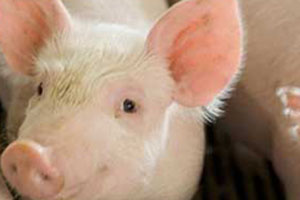Experts: Molecular technology to drive animal health

Molecular technology will play a vital role in safeguarding the health and productivity of food animals in the future. That was the message from expert speakers at a meeting earlier this week in Brussels, Belgium, entitled Advances in Diagnostics.
“Technology is taking over,” said Dr Willie Loeffen, president of the European Association of Veterinary Laboratory Diagnosticians (EAVLD). “Laboratory diagnosis used to be 99% labour and 1% technology, nowadays the emphasis is the other way around. Technology is now an integral and indispensable part of veterinary laboratories.”
Dr Loeffen used the investigation of PRRSV infection in pigs and the more recent appearance of Schmallenberg virus in Europe to highlight how modern molecular techniques could help to characterise new disease threats rapidly.
“It took four years of laborious work for us to characterise the cause of PRRS, but thanks to sequencing technology Schmallenberg virus took just a few months.
“Technological developments mean that diagnosticians now do things that they could only dream about 10 or 20 years ago.”
As well as providing a means of identifying new disease threats quickly, the meeting highlighted the increasing role of diagnostic tools as an integral part of maintaining animal health.
Animal health
“The application of molecular technology means that we can now understand diseases and animal health at a more fundamental level than ever before – at the gene level – and that will have a major impact on the way we approach animal health in the near future,” says Dr Kirk Adams, Director of Product Management at Life Technologies, the meeting sponsor.
“Veterinarians now have access to a wider range of diagnostic tests than ever before; and they are faster, more accurate and more precise than ever before. These advances have the potential to revolutionise the way in which we manage the health and welfare of food animals.”
According to Adams, the advances in technology mean that diagnostic tools can be used to take a more pro-active and holistic approach to animal health.
“Diagnostic tests are no longer confined to finding out what killed an animal. We now have the means to take a more targeted approach to treatment, and reduce the use of broad-spectrum drugs. In the future we will even be able to use gene sequencing to determine the sensitivity of individual animals to specific treatments.
“Molecular tests, such as PCR, also facilitate disease eradication programmes, more strategic use of vaccination, more effective biosecurity measures and the management of diseases for which there is no effective treatment, such as Johne’s disease, by allowing the identification of asymptomatic, persistently infected animals.
“There are many ways in which this technology can and will be applied to improve the health and productivity of food animals.”
One of the key areas discussed at the meeting was the use of new diagnostic tools to safeguard Europe’s farm animals against the threat of new, emerging diseases.
“One of the biggest threats to animal health is the development of new types of pathogen or new diseases spreading from other regions. Schmallenberg virus is just one of the most recent examples.
“Molecular technology gives us the ability to characterise these threats quickly and accurately and to develop diagnostic tools that allow us to track the threat and assess our management,” concluded Adams.
The meeting also touched on a new and more sensitive ELISA test for bluetongue virus (BTV) antibodies.
Related website:
Life Technologies
 Beheer
Beheer






 WP Admin
WP Admin  Bewerk bericht
Bewerk bericht